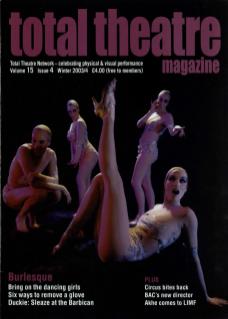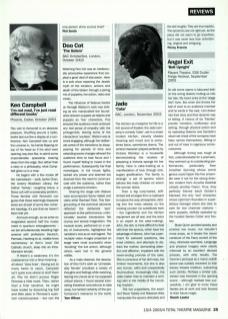An old crone opens in laboured Irish (in the wrong dialect) inviting us into her tale. My heart sinks at the stage Irish' tone. But when she throws her ball of wool to an audience member and he winds in the cast, I am drawn into their story and their dynamic way of telling. A chorus of six 'Faeries' provide narration, buffoonery and setting, through physical action and by operating Golema and Gamble's clever set (most of the company have faery names themselves), flitting in and out of roles in ingenious comiccostumes.
Although timing was rough at first, understandable for a premiere, they warmed up to outstanding performances, particularly from Jonathan Gunning whose comic genius could hijack this fine ensemble were it not for the strong direction evident from Acushla Bastible (clearly another Faery). Thus, they perfectly framed Iseult Golden's Mairead, the only real character, whose optimism flounders in superstitious Donegal where she tries to care for two charmed orphans - eerie puppets, skilfully operated by the hooded faeries Cotter and Fes. sey.
Bryan Quinn provided spooky and emotive live music, but shouldn't move props, as it breaks the clever construct of the Faery control of the story, otherwise seamless. Language and physical imagery were clearly informed by an excellent devised process, with witty results. The Famine's portrayal as a manic ceilidh dance was suitably irreverent to Irish literary theatre tradition, subverting such clichés. Perhaps a similar subversion was intended in the opening scene - although realised less suc cessfully. I am glad to know these faeries are at work and look forward to their future magic.

